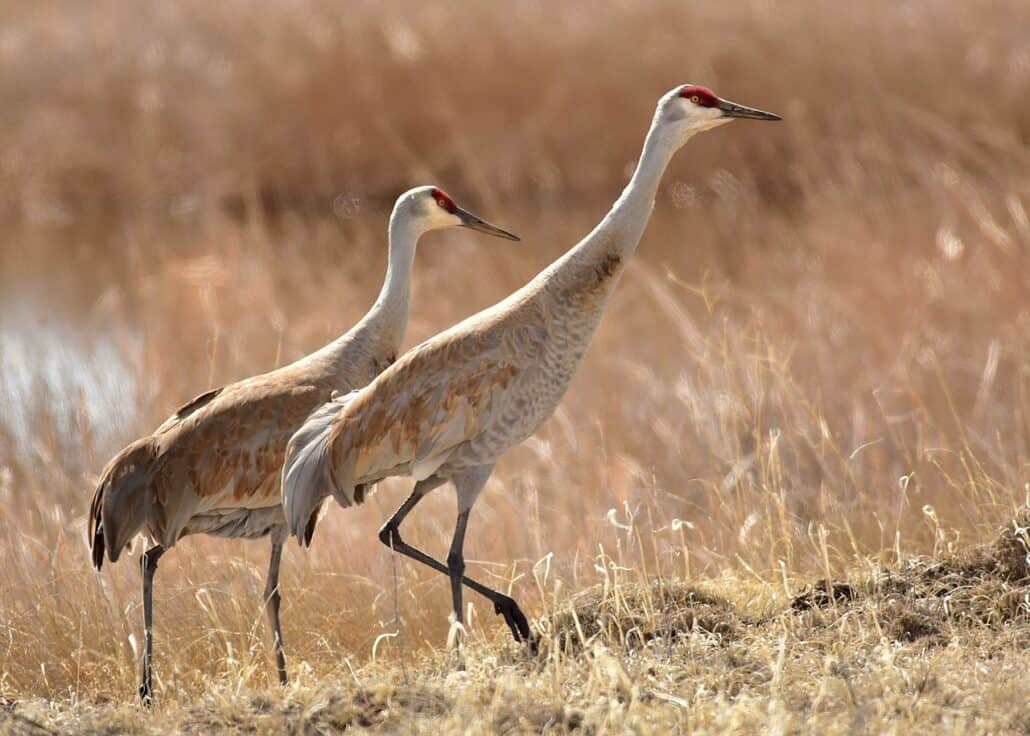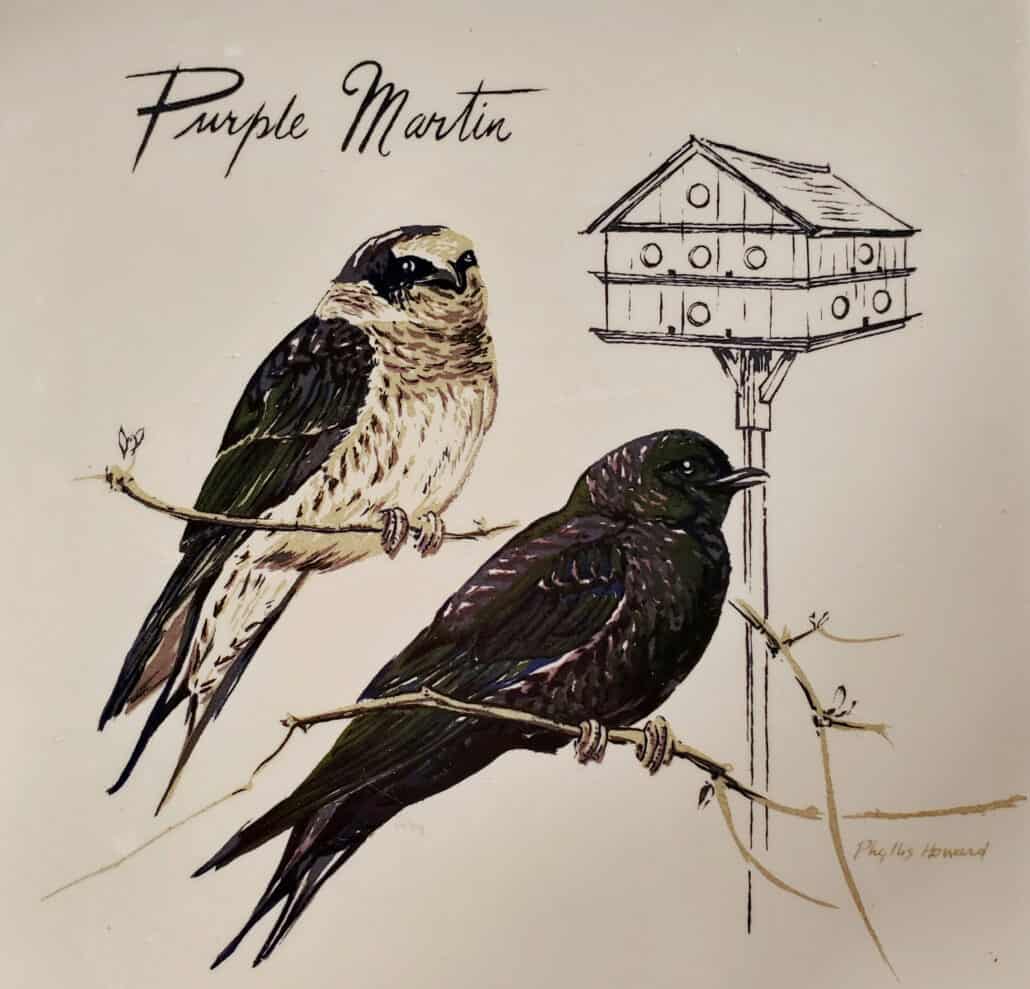Audubon’s long-standing tradition of Christmas Bird Counts are conducted each year between December 14 and January 5, and this season marked the 121st annual CBC! BWD editors Dawn Hewitt and Jessica Melfi participated in different counts on January 2, and here they share their very different—but equally memorable—experiences.
The Thrills of Christmas Bird Counts
by Dawn Hewitt
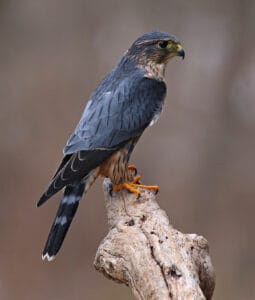
Oh, how I love Christmas Bird Counts! In my college and grad school days, before “business hours” became the skeleton of my daily planner, all-day birding trips were fairly common adventures in my life. In the past few decades, not so much—except for Christmas Bird Counts. I’ve always signed up to start with owling a few hours before dawn. Usually that pays off by getting to hear an eastern screech-owl, or a barred or great horned owl, and on a few memorable occasions, I’ve seen owls, which is an uncommon treat.
And so it was January 2, 2021, on the Parkersburg, West Virginia, CBC. My birding buddy Kyle Carlsen and I were assigned to the “outer Belpre, Ohio, loop.” We started in near darkness at 5 a.m. and stopped at a handful of forest or forest edge sites that seemed like suitable owl habitat. An eastern screech-owl responded to playing a recording of its calls; and a great horned owl was already vocalizing when we got out of our vehicles at another rural location. While driving, I also glimpsed what I suspect was a barred owl. We stopped nearby and played various owl recordings, but nothing responded, so we couldn’t add that one to our CBC tally. That’s okay. Being rewarded with three owl encounters is satisfactory payoff for two hours of birding in the dark.
The owls, however, weren’t the highlight of our CBC route. In mid-morning we were driving down a commercial thoroughfare in Belpre, when Kyle suddenly veered into a Wendy’s parking lot. What the heck? He parked fast and jumped out of his car. “Merlin on the pole!” he said, setting up his scope for a close-up look and digiscoping. Wow! That falcon was eating a very red bird. I’m not sure if it was a male cardinal or the innards of some other species, but the merlin was certainly going to have a full belly! We thought that would be the bird of the day, the most significant find. We were wrong—doubly.
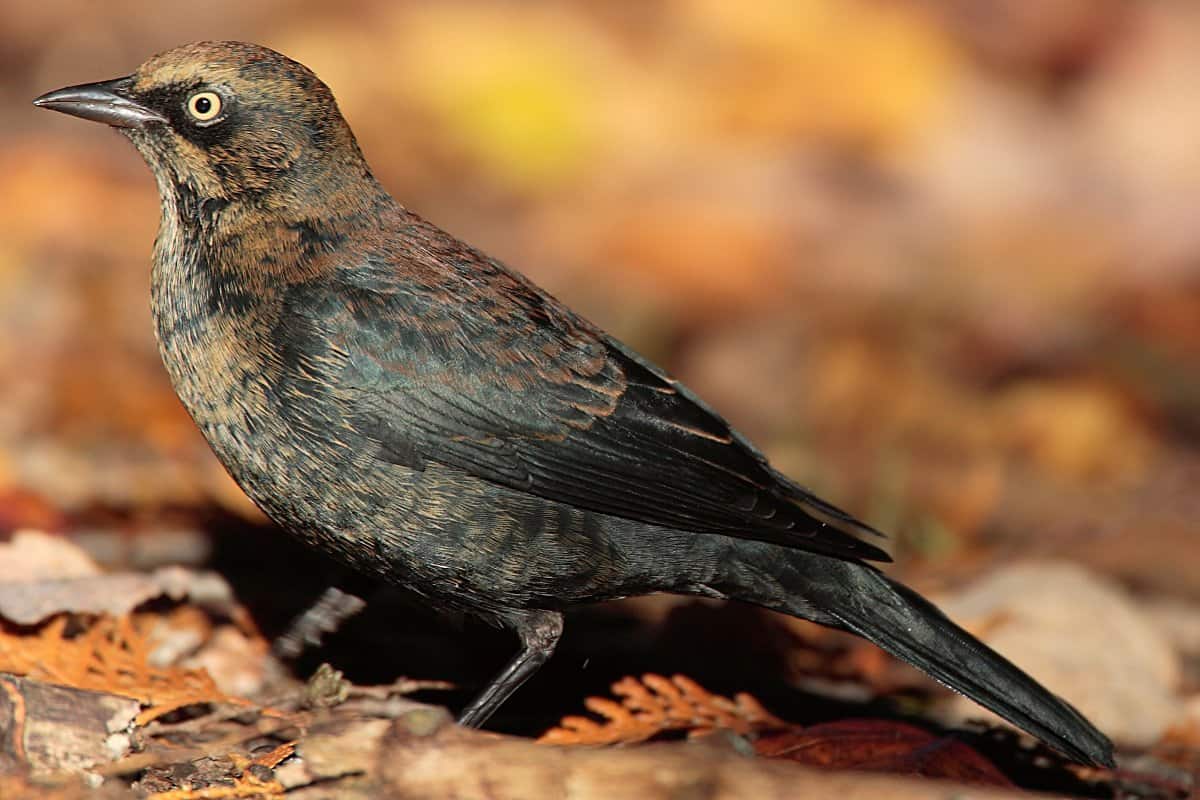
At a sprawling city park on the bank of the Ohio River, we came upon a huge flock of blackbirds. We tried to make them into redwings, but failed. They were rusty blackbirds; several dozen males and females! There might have been a few red-wings among them, but this was by far the largest flock of rusties I have ever seen! The population of rusty blackbird is on a steep decline, and they are not regularly reported in this area. They stuck around the park while we were there, and so we got several great looks at them—another thrill!
Not long afterward, farther in the depths of Civitan Park, I heard what sounded like a sandhill crane—a sound I knew well from living in southern Indiana, where flocks commonly flew over my house between November and March every year. But that species had been documented only twice ever in the Mid-Ohio Valley, and never in Washington County, Ohio, so I thought my ears were deceiving me. A man was sitting in a rattletrap van nearby, engine running. I said to Kyle, “I thought I heard a sandhill crane just now, but I guess it was that van’s noisy muffler!” We laughed.
Within two minutes, Kyle said “There is a sandhill crane over there—just past the swimming pool!” And so there was! Kyle asked if sandhills vocalize when they are alone. I know for sure that this one did!
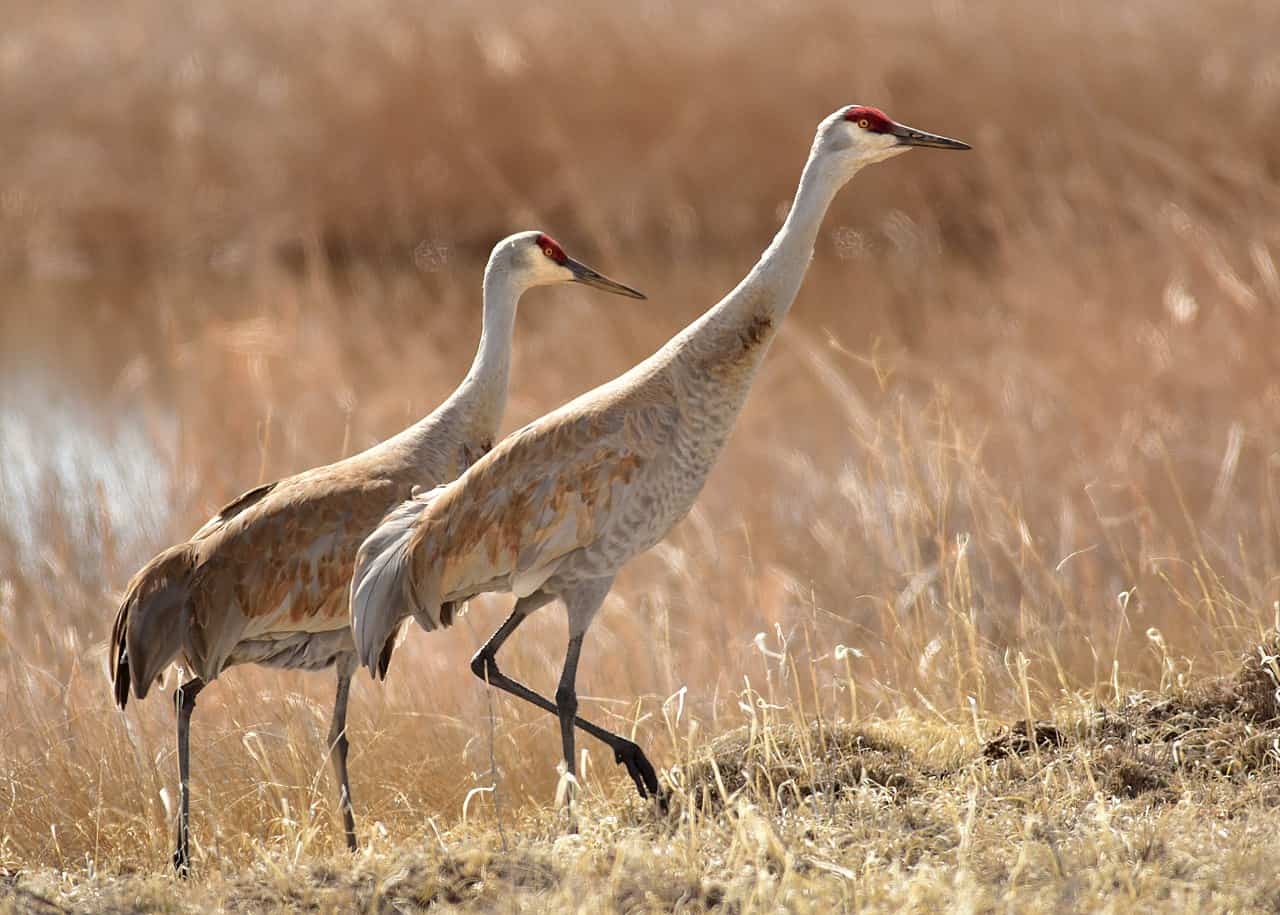
Kyle reported it immediately to the local birding email list, and we enjoyed watching it walk and forage in the wet grass, but it soon flew off, and we lost sight of it. As we continued our loop, we located it again not far east of the park in a harvested corn field. We updated the list with the new location (several hundred yards from the road), where it stuck around, thrilling many birders who came to see it that day and the next.
After seven hours of birding, including two hours of darkness, Kyle and I had turned up 41 species, including three that were extra thrilling. It was a great day to be out birding! Christmas Bird Counts usually deliver!
CBCs: More Than Just Counting Birds
by Jessica Melfi
I have been participating in Christmas Bird Counts for six years now, and I have come to earnestly look forward to them every year when the holidays roll around. A whole day set aside for birding and communing with nature in the midst of the most hectic time of the year? Sign me up!
I have been fortunate that the counts I participate in are located in the picturesque rolling Appalachian foothills about an hour southeast of my home in Columbus, Ohio. The habitat continually shifts between rural and wooded, with lakes, wetlands, and even caverns sprinkled in as we comb the country roads assigned to us.
This year, I was fortunate enough to be teamed up with naturalist Jim McCormac, who I am quite certain knows more about every nook and cranny in Ohio than any other person in the state. Jim worked for the Ohio Department of Natural Resources for 31 years, and his career took him to pretty much every corner of every county, and this man KNOWS STUFF. I knew I was not only going to see some great birds but also learn a great deal about all kinds of flora and fauna when I joined him last weekend. I was not disappointed.

Our count began at Lake Logan, below its dam, and right off the bat we had two juvenile bald eagles on our list. We watched them swooping and rising in their hunt over the water for a bit before we headed south and delved into our count.

As we walked through some brush alongside a little stream, we began to note the usual winter suspects: Carolina wren, northern cardinal, tufted titmouse, Carolina chickadee, blue jay, American crow, song sparrow, eastern bluebird, dark-eyed junco. A kingfisher loudly announced his dissatisfaction with our presence. We tried to decide if we had heard a winter wren, but we couldn’t get eyes on the bird, so we didn’t count it. We got the first of 18 golden-crowned kinglets for the day and the first of several yellow-rumped warblers.
As I followed Jim back to the car, he reached down to pick a goldenrod stem and turned around to show it to me. Halfway down the stem was a sizable bulb where the plant had protected itself by walling off an invading gall fly larva. As I pondered the plant’s survivalist techniques, Jim rotated the stem to reveal a hole on the opposite side of the bulb—a hole drilled by a downy woodpecker to retrieve the larva inside. And that was the first time my mind was blown that day.
How on earth, first of all, did Jim even spot that stem among the sea of stems? And then to know to look for the drilled hole, and that specifically a downy woodpecker was the excavator? It’s enough to make me want to go back to school and become an ornithologist! Since that probably won’t happen, I am grateful to have such knowledgeable naturalists in my world, ones who are incredibly generous in sharing their knowledge with an aspiring wannabe naturalist.
And so our day went. We’d drive another mile or two, then pull over to look, listen, and learn. Yes, we added many more birds to our list, including a few hermit thrushes we rustled up out of some thick brush (and I learned to look for sumac to find thrushes—they love the berries), and a beautiful pair of swamp sparrows perched on some cattails, giving us some nice long looks as they curiously eyed us. Our final tally for the day was 39 species, a respectable number for a cold January day.
But it’s not the birds that I am likely to remember from this CBC—it’s the stuff in between the birds. Like the gorgeous grove of bigtooth aspen we encountered in the middle of nowhere, split in two by the road. We pulled over simply to marvel at the striking way they leaned together. Jim explained how these trees are actually one plant—that aspen colonies are clones and this is really just ONE TREE. (Mind blown again!)
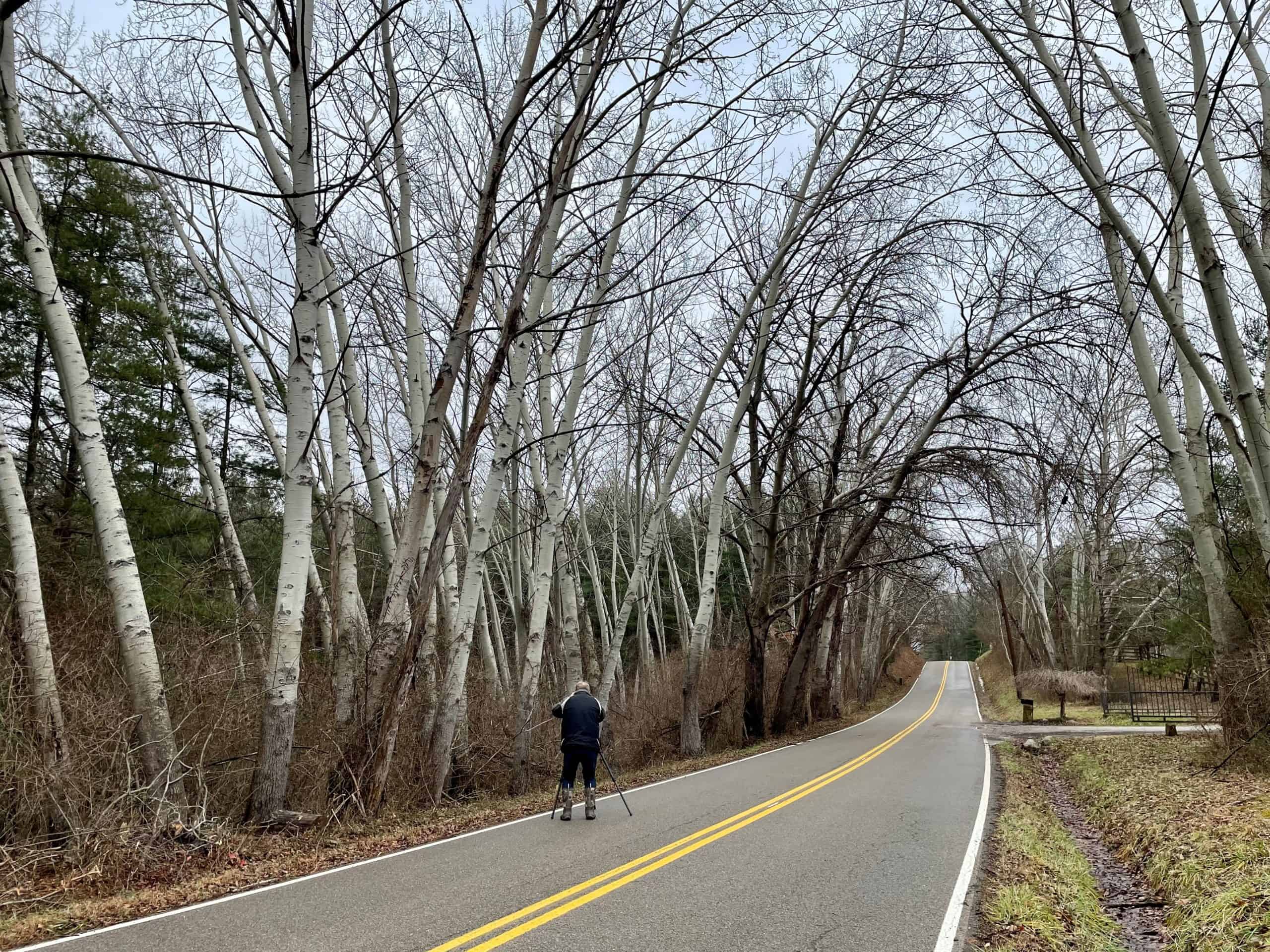
By far, though, the biggest flora highlight of the day was a fern. Not just any fern—an Appalachian filmy fern. I happen to love ferns, as they remind me of my childhood home—my mother always landscaped with the most beautiful lush ferns, “huge beauties” we called them. On this day we saw a number of different fern varieties, each unique and lovely, but the Appalachian filmy fern is special. Jim knows of only three small patches in Ohio, and one of them was right off a road on our route, tucked into a dark recess where it grows like a stalactite, hanging from a stone ceiling. The leaves are incredibly thin, “like rice paper,” Jim explained.
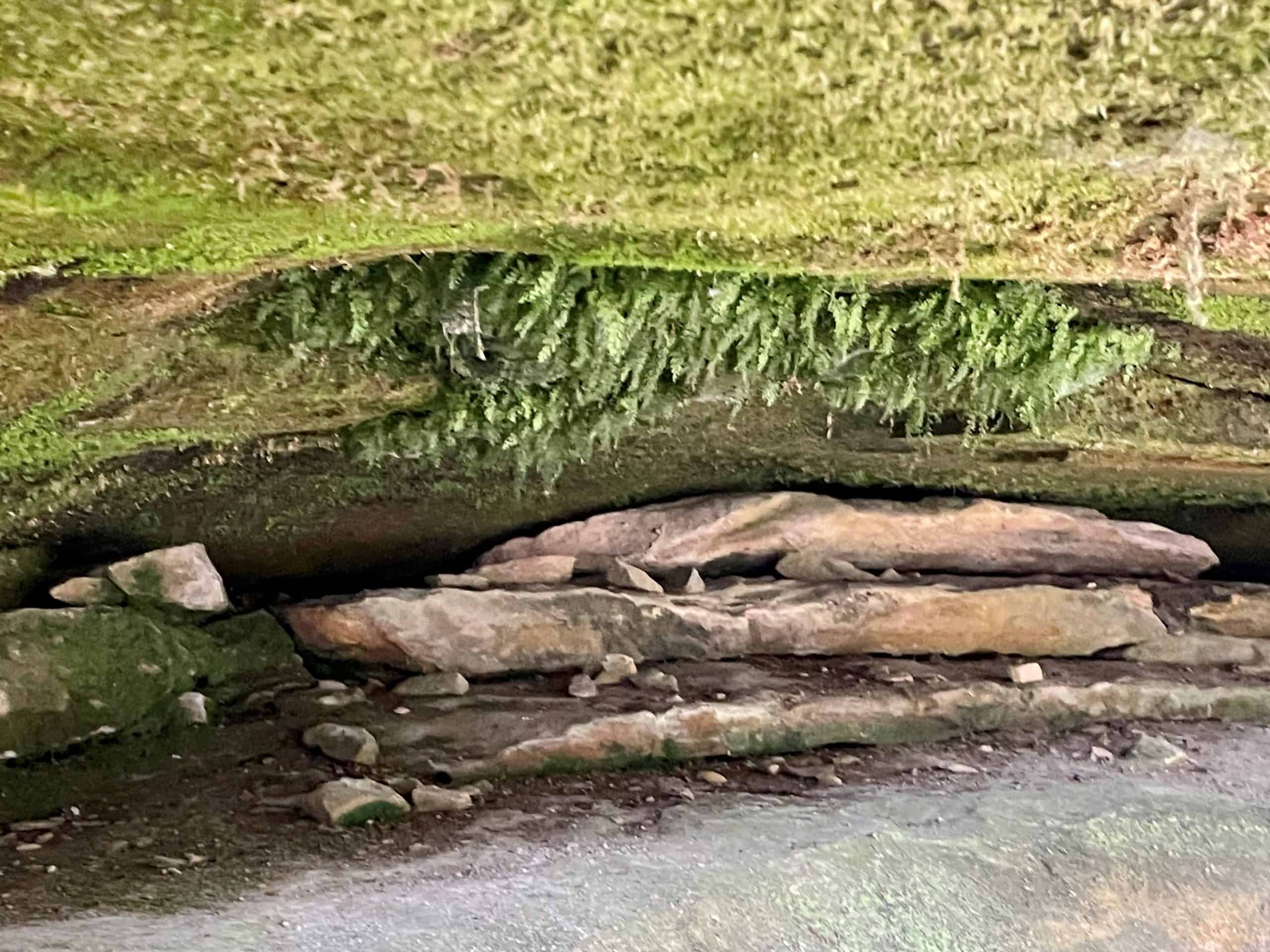
We had to trek a bit up a muddy incline to make our way to the secret spot and get our knees a little dirty to peer into the darkness to marvel at the delicate but persistent plant. Jim has been coming here for 20 years to ensure its presence, but it was obvious he never tires of appreciating this rarity. I felt incredibly privileged to be let in on this little secret, and also a little sorry for the folks driving past us, probably wondering what the heck we were doing halfway up a roadside cliff staring into the rocks on a cold winter’s day—they had no idea what a treasure was hidden in these hills, and most probably would not understand our fascination.
All in all, it was a successful day, both in terms of completing our duty of counting birds and the many delights and surprises along the way. I’ve said it before, and I’ll say it again: Some of the best things about being a birder aren’t the birds; it’s the landscapes, the trees, the shifting clouds, the good conversations, and especially the reminder that the more you learn the more there is to learn.

Looking to Subscribe?
Get 6 print issues of the magazine delivered to your door
& free digital access
- One Year Print Subscription: $26
(to US or Canada, includes digital access) - One Year Digital-only Subscription: $15
- Two Year Print Subscription: $48
(to US or Canada, includes digital access)

